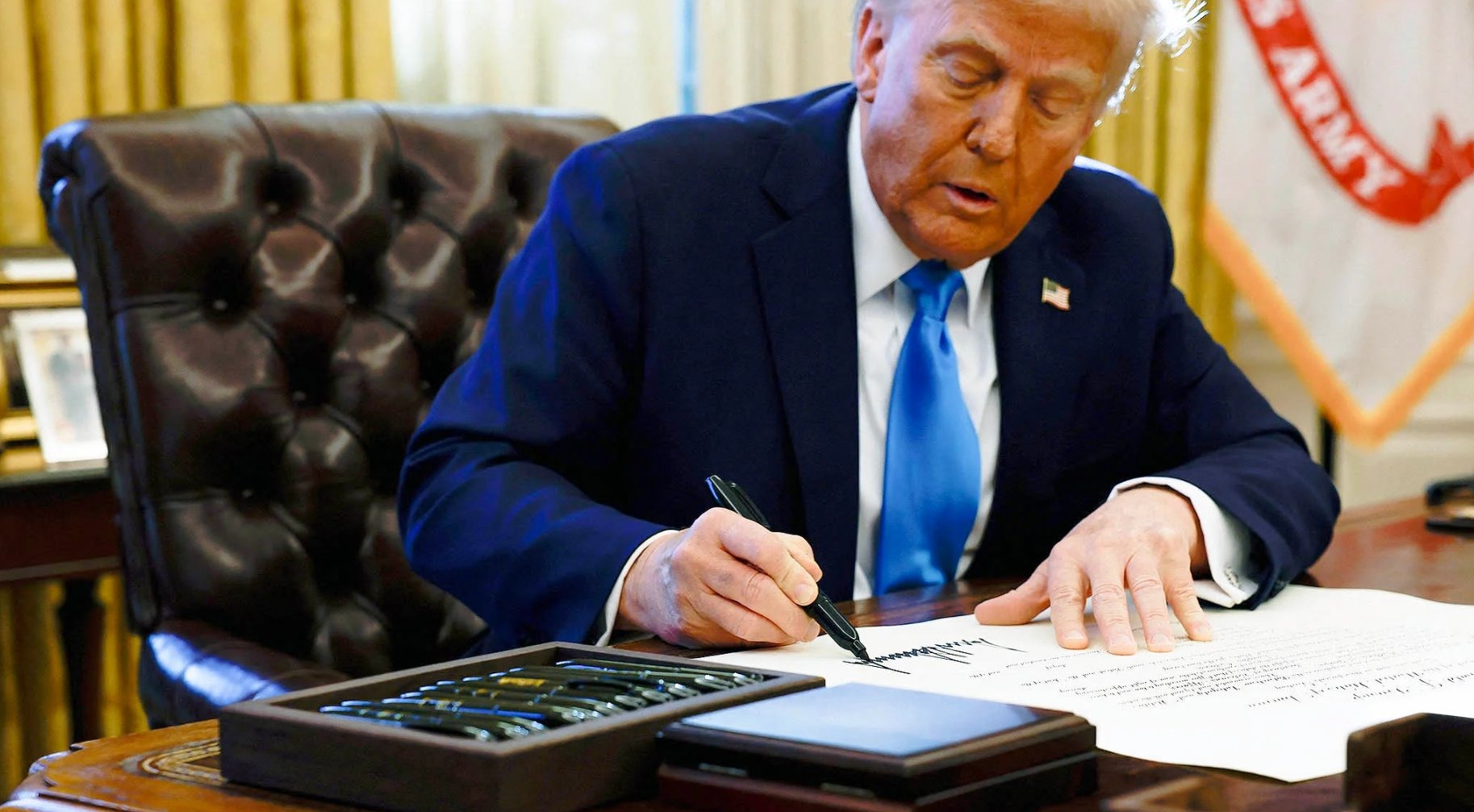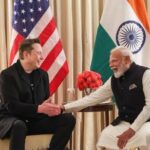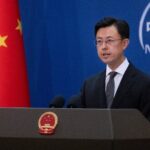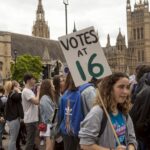Introduction: Ties under Tension
The complex geopolitical and trade relationship between the United States and India has taken another turn. Former U.S. President Donald Trump, known for his unconventional diplomacy and sharp remarks, recently hinted at imposing a 20-25% tariff on Indian goods if re-elected in the upcoming U.S. elections. In the same breath, he also repeated his earlier claim that he had played a decisive role in negotiating the India-Pakistan ceasefire during his presidency — a claim that has previously been dismissed by Indian authorities.
These remarks come at a time when India-U.S. relations are undergoing dynamic shifts, influenced by strategic cooperation, defense deals, trade negotiations, and a shared concern over China’s growing assertiveness in the Indo-Pacific.
This article delves into the nuances of Trump’s statements, the historical backdrop of India-U.S. trade tensions, the diplomatic friction surrounding ceasefire claims, and the potential implications for both nations in the evolving geopolitical landscape.
1. The Tariff Threat: Trump’s Familiar Playbook
What Did Trump Say?
Speaking at a political rally, Donald Trump suggested that India was taking advantage of the U.S. in trade and vowed to correct the imbalance by slapping a 20 to 25 percent tariff on imports if elected again. This is not a new stance — Trump has long criticized India’s tariffs on American goods, often citing the example of Harley-Davidson motorcycles being taxed heavily by Indian authorities.
He framed his remarks around the theme of “America First,” reinforcing his long-standing belief that America’s trading partners must pay their fair share or face economic retaliation.
A Pattern Repeated
Trump’s tariff rhetoric mirrors his 2016 and 2020 campaigns, where he accused countries like China, Mexico, and India of exploiting U.S. trade generosity. During his term, Trump had revoked India’s preferential trade status under the Generalized System of Preferences (GSP) in 2019, citing lack of reciprocal market access for American businesses.
India retaliated with tariffs on 28 U.S. products, including almonds and apples, triggering a mini trade spat that required intense back-channel negotiations to calm down.
2. India’s Trade Profile: Are Trump’s Accusations Valid?
Trade Imbalance Realities
While the U.S. is India’s largest trading partner, the trade balance is tilted in India’s favor. In FY 2022-23, bilateral trade was estimated at $128 billion, with India exporting more than it imported. However, this imbalance is modest compared to the U.S.-China trade deficit.
Critics argue that Trump’s focus on tariffs oversimplifies the global supply chain and fails to consider the intricate balance of services, investments, and human capital that flows between India and the U.S.
Tariff Structure: India’s Defense
India, like many developing nations, maintains higher tariff barriers on certain categories to protect domestic industries and employment. Indian officials argue that these tariffs are well within the guidelines of the World Trade Organization (WTO) and are essential for maintaining self-reliance, especially post-pandemic.
3. Ceasefire Claims: Trump’s Diplomatic Boast
Trump’s Statement
Alongside his tariff threats, Trump also resurrected a diplomatic claim — that he was instrumental in brokering a ceasefire between India and Pakistan during his presidency. Referring to the 2021 LoC ceasefire agreement, Trump suggested that his intervention had helped de-escalate tensions between the two nuclear-armed neighbors.
This claim has been denied on multiple occasions by India’s Ministry of External Affairs, which maintains that the ceasefire was a bilateral decision between India and Pakistan, achieved through direct military-to-military engagement.
A Misunderstood Timeline
The 2021 ceasefire announcement came months after Trump had left office. Indian and Pakistani military officials issued a rare joint statement committing to adhere to the 2003 ceasefire agreement, following an uptick in cross-border firing incidents in Kashmir.
Indian officials were quick to underline that no third-party mediation was involved, especially considering India’s long-standing position against internationalizing its bilateral issues with Pakistan.
4. Reactions from India: Dismissal and Diplomacy
Jaishankar’s Clarification
In an earlier rebuttal to similar claims, External Affairs Minister S. Jaishankar clarified in Parliament that no such intervention from former President Trump had occurred during the timeline he had indicated.
Jaishankar emphasized India’s independent decision-making in defense and foreign policy matters and reassured the Parliament that India does not accept third-party mediation in its relationship with Pakistan.
Domestic Political Response
Indian political leaders, particularly from the opposition, have often used Trump’s statements to critique the ruling government, questioning whether India’s foreign policy image is being manipulated by external narratives.
However, the ruling party has stood firm in its stance, reiterating that India engages with global powers on equal footing, including with the U.S., regardless of who is in the White House.
5. U.S.-India Relations Under Trump: A Mixed Bag
Defense and Diplomacy
While Trump’s presidency saw a hard stance on trade, it also witnessed closer defense ties. The signing of the Basic Exchange and Cooperation Agreement (BECA) in 2020, along with other foundational defense agreements, elevated the strategic partnership between the two countries.
Howdy Modi and Namaste Trump
Trump’s tenure also saw grand public displays of camaraderie, including the “Howdy Modi” event in Houston and the “Namaste Trump” rally in Ahmedabad. These optics were used by both sides to showcase a strong personal rapport between Trump and Modi, even as underlying trade tensions simmered.
6. The Geopolitical Context: India’s Global Standing
India’s Balancing Act
India has positioned itself as a global player with a neutral yet assertive foreign policy. From its membership in the QUAD alliance with the U.S., Japan, and Australia, to its cautious approach in dealing with Russia during the Ukraine war, India’s diplomacy reflects pragmatism and independence.
Impact of U.S. Elections on India
Should Trump return to the Oval Office, India-U.S. relations may face renewed trade turbulence, but it is unlikely that strategic defense cooperation will suffer. Both nations recognize the importance of containing China’s rise and maintaining a free and open Indo-Pacific region.
However, New Delhi may need to brace for economic unpredictability under another Trump administration, especially if aggressive tariff measures are implemented.
7. The Bigger Picture: Trade, Politics, and Optics
Election Year Politics
Trump’s recent statements are also seen as strategic campaign messaging. Targeting foreign nations for allegedly harming U.S. economic interests has been a hallmark of Trump’s populist appeal. India, being a growing exporter of pharmaceuticals, textiles, and tech services to the U.S., is an easy rhetorical target.
India’s Tech and Pharma Power
Despite trade frictions, American firms continue to benefit from India’s IT sector, skilled workforce, and generic drug manufacturing capabilities. Any move to impose steep tariffs may invite retaliation, potentially hurting U.S. firms operating in or sourcing from India.
8. Public and Media Reaction
Indian Media
Indian media outlets largely covered Trump’s remarks with skepticism, pointing out inaccuracies and inconsistencies in his claims. Many editorials noted that Trump’s narrative seems aimed more at domestic American audiences than reflecting the actual state of India-U.S. relations.
American Media
In the U.S., mainstream media interpreted Trump’s remarks as part of his nationalist economic revival pitch. While some commentators warned of renewed trade wars, others suggested that such threats often serve as negotiation tactics and might not always translate into actual policy.
Conclusion: A Relationship at Crossroads
Donald Trump’s statements — on imposing steep tariffs on Indian goods and claiming credit for an India-Pakistan ceasefire — once again underscore the complicated and layered nature of global diplomacy. While such comments might play well with a domestic base eager for protectionist policies, they risk undermining years of diplomatic progress.
India, for its part, remains steadfast in its strategic autonomy, refusing to be drawn into narrative games. Whether Trump returns to power or not, the relationship between India and the United States will continue to evolve, shaped by mutual interests, geopolitical dynamics, and the leaders at the helm.
Trade irritants may flare up, but the long-term trajectory of India-U.S. ties appears robust, grounded in shared democratic values, economic synergy, and a vision for a multipolar world.






Sprunki Incredibox is a brilliant twist on the original, offering fresh beats and visuals that keep the creativity flowing. Check out more mods at Spunky Games – a must for music lovers!
ремонт бойлеров и водонагревателей в москве с выездом [url=http://www.master-remonta-boylerov.ru/]http://www.master-remonta-boylerov.ru/[/url]
[url=http://piony-msk.ru/]Пионы купить в Москве букет с доставкой на дом недорого[/url]
Выбирая букеты с пионами, вы можете создать неповторимую атмосферу праздника и радости.
Свадебный букет для невесты можно купить в Москве недорого. Свадебный букет играет ключевую роль в общем стиле невесты, поэтому его стоит выбирать тщательно.
[url=https://bukety-neveste.ru/]Свадебный букет для невесты купить в Москве недорого[/url].
Даже при скромном бюджете найдется масса красивых букетов, которые будут выглядеть стильно. В Москве имеется множество флористов, предлагающих разнообразные букеты.
При подборе букета важно помнить о стиле свадьбы и вкусах невесты. Букет должен быть в тон к платью и общему антуражу свадьбы, поэтому стоит уделить этому внимание.
Работая с флористом, невеста может обсудить все нюансы и получить идеальный букет для своего важного дня. Заранее продуманный и заказанный букет поможет избежать неожиданностей в день свадьбы.
Cost-effective professional cleaning, fits our NYC budget perfectly. Cost-effective quality delivered. Quality without overpaying.